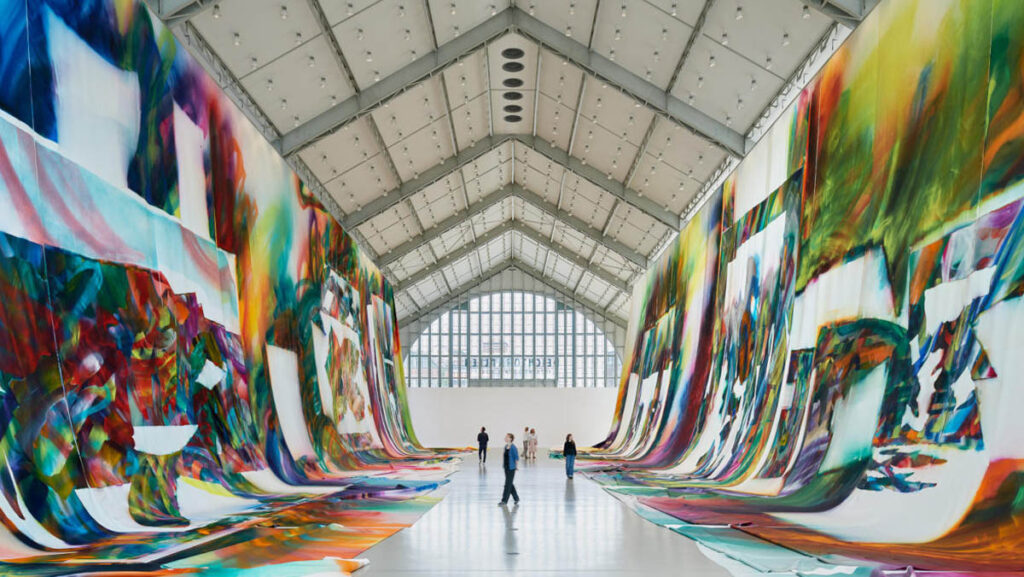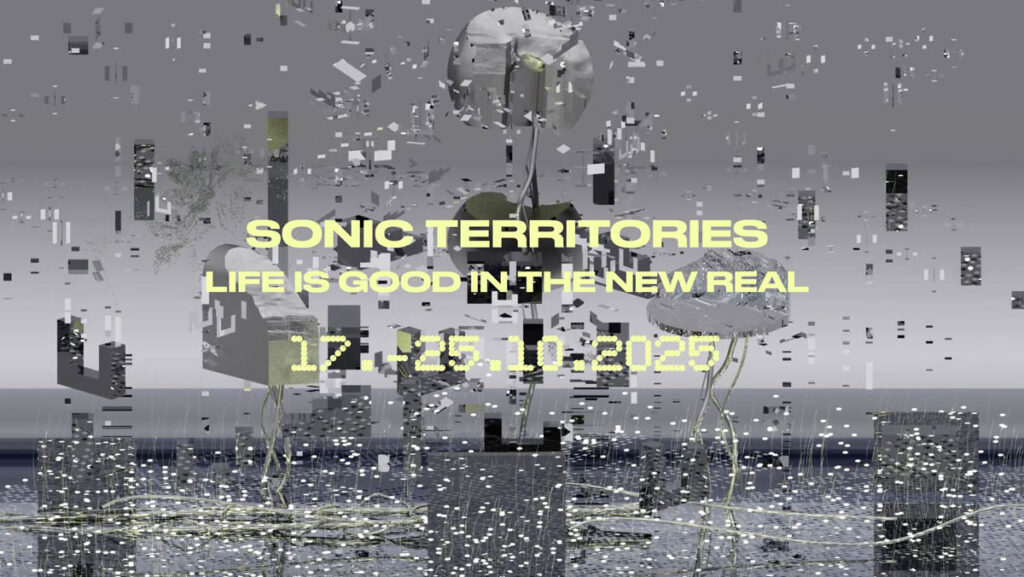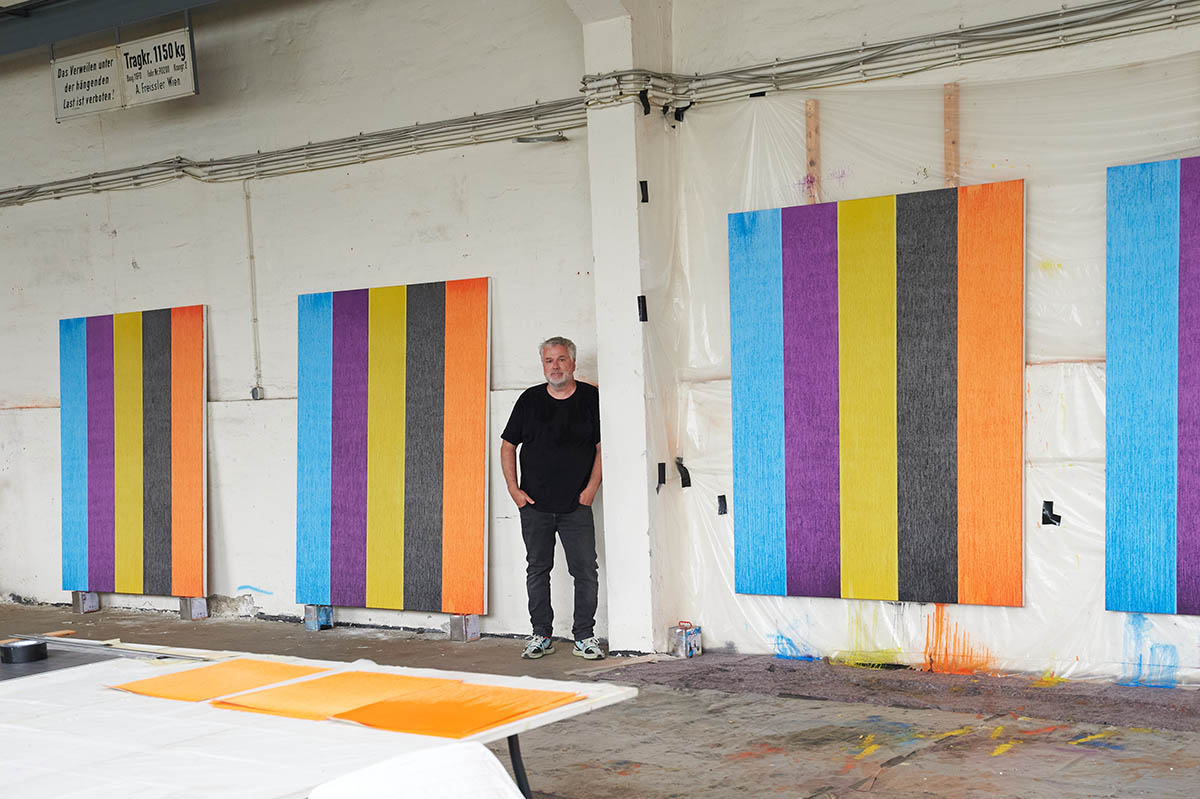
Let’s start with your process: How do you prepare your canvas surfaces? Are there steps you always repeat?
I paint only in oil colors. So the process of drying takes a lot of time. I use a machine-pre-primed canvas, so that the basic conditions are always the same. I test the paint on smaller formats several days in advance, always the same size, until it achieves the desired consistency. The actual painting process is relatively short; it’s more the planning and preparation, and the space. Preparation is about patience, attention to detail, and being careful and concentrated so that the production of the final piece is more about enjoying the results.
As I work in series so that I can compare several results with each other and make selections, I always have to be able to spread out well. Then there are selections. Works that I have sorted out are treated further, and there are other imperfect works with deliberately placed, seemingly random errors or artifacts.
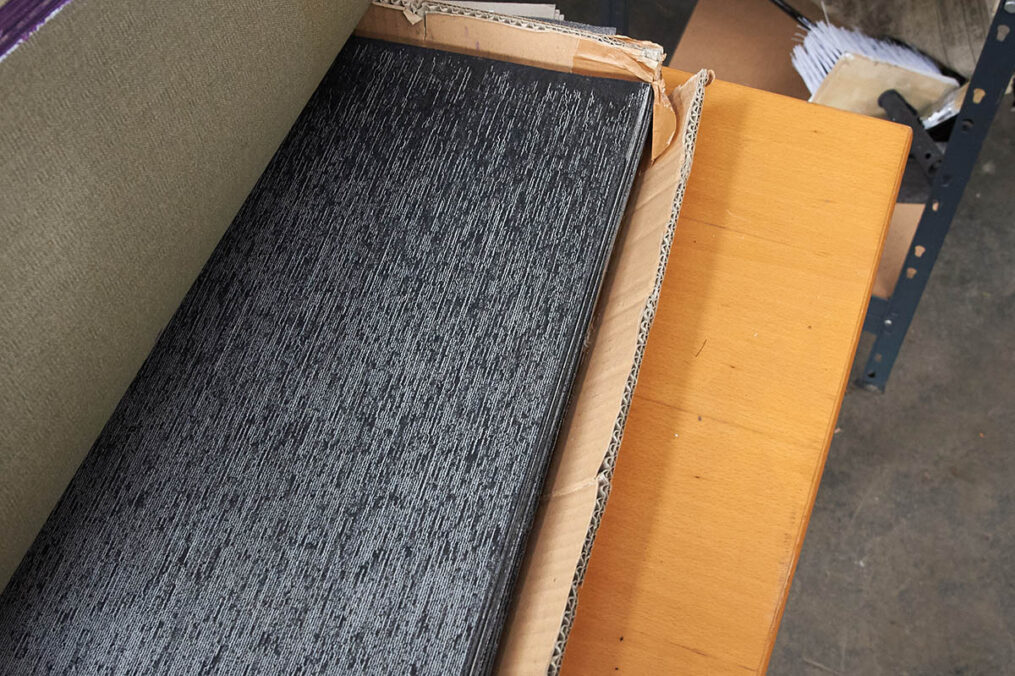
I use special liquid colors that go in canals made in canvas; they need to dry inside. I am painting the canals standing up; like that, I can control how good the color is. The way color comes from the top to the bottom.
I started with black and then with violet because they are artificial colors. They are also used in photo studios or silk print workshops; there is always this red or violet light that doesn’t influence the process. The colors I use never come from nature but are always in some way technology-related. The sizes of my canvases are always related to the human body. I always start with vertical formats because they feel more like portraits. I prefer this orientation, as horizontal formats often evoke associations with landscapes, which have nothing to do with my work.
Painting must be like a good pop song; it catches you in the first moment, and then it gets interesting.
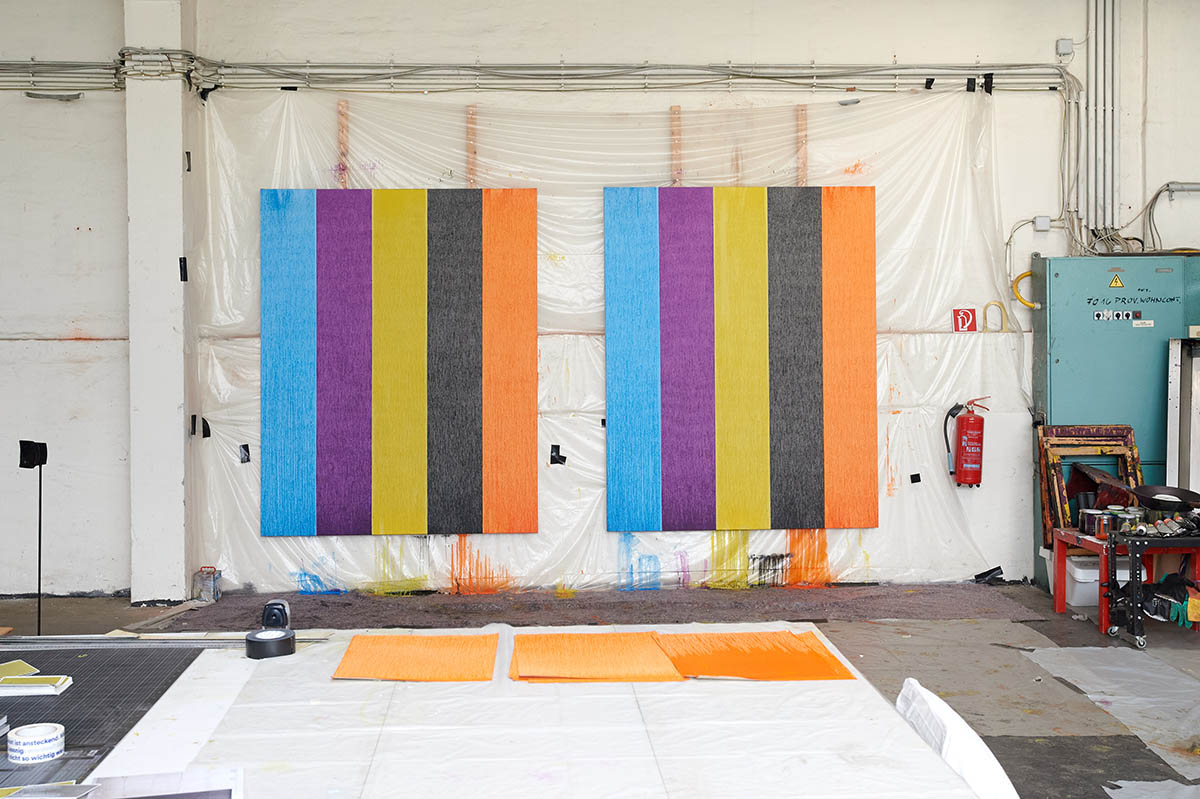
You were born in Salzburg and came to Vienna to study at the Academy of Fine Arts. Can you go back and recall that time?
Before I studied art, my parents wanted me to do something “practical” first. So I initially studied graphic design, and afterwards I was finally able to begin my art studies. I started in Professor Josef Schulz’s class.
I wanted to make the most of my time at university. That’s why I attended many workshops at the Institute for Contemporary Art. At the time, the institute was led by Denys Zacharopoulos. I tried out many things before I decided to focus on painting. After just four years, I completed my studies. I was studying alongside artists like Dan Graham, Vera Frenkel, Gaylen Gerber, Tony Oursler, Dara Birnbaum, and Leiko Ikemura.
Who or what has had a strong influence on your artistic development?
I had a one-month New York scholarship in my second year at the academy. We visited many studios, including Peter Halley’s, which I still find very impressive. In Vienna, I had the opportunity to choose from a list of studio visits at the Institute for Contemporary Art. I chose Herbert Brandl and Erwin Bohatsch, who (along with Heimo Zobernig and Franz West) are still my favorite Austrian artists. Internationally, I currently find Wade Guyton, Katharina Grosse, Banks Violette, Dash Snow, Sterling Ruby, Mary Heilmann, Brice Marden, and Christopher Wool the most interesting.
You can always be a fan of someone’s work, but never allow yourself to be influenced by it in your own work.
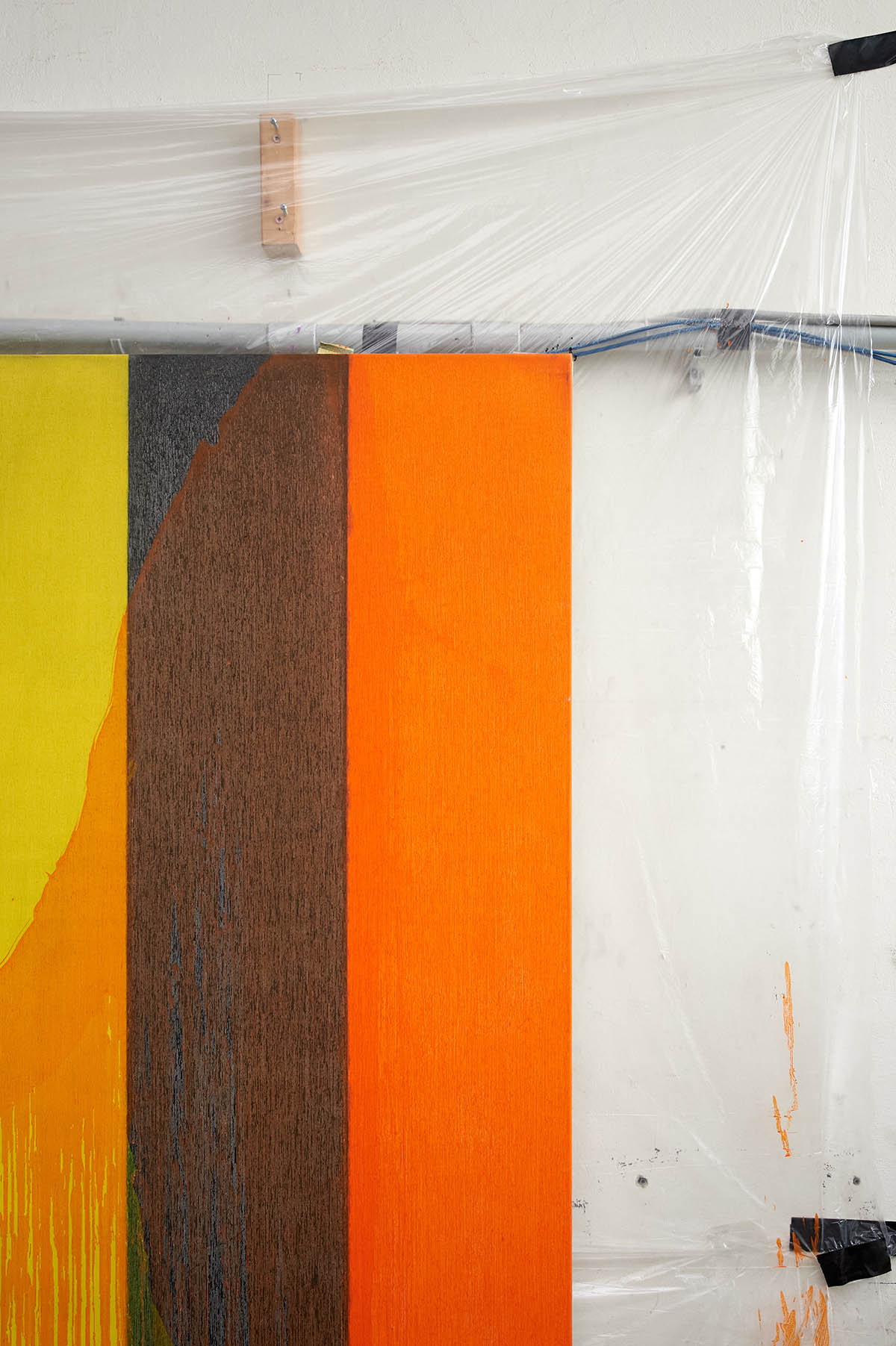
You also studied in Stuttgart. How was the German art scene at that time different from the one in Austria?
In Stuttgart, I was a postgraduate student of Prof. Paul Uwe Dreyer, and I was given a studio in Untertürkheim. Stuttgart was a bit sleepy at the time. In Vienna, I was used to going to all kinds of openings and partying. That didn’t go down so well there. So I opened my own art space (DESSE) with two other colleagues around the corner from the Künstlerhaus Stuttgart. The main reason for it was to have more contact with the people in the city and to organize parties. It was also an evening meeting place for the scene at the time. I had the opportunity to meet many curators and artists, including Nikolaus Schafhausen, Martin Hentschel, Barbara Steiner, Lily van der Stokker, Rirkrit Tiravanija, Jutta Köther, and Stephan Schmidt-Wulffen, with whom I also worked as an assistant.
What is your relation to Salzburg today? Do you go there often? What do you think of the scene there?
I left Salzburg when I was eighteen because I was a music fan. I saw Sonic Youth, Birthday Party, and Swans for the first time in the city’s movie theater. In Salzburg, you were more of an outsider with this taste in music, and Vienna, as the capital, was a good escape for independent fans.
I mainly come to Salzburg to visit my family, who still live there. Then I sometimes make it to the Salzburger Kunstverein, Galerie 5020, or Galerie Thaddaeus Ropac. I don‘t notice the big changes from a distance. I will never forgive them for not building the Guggenheim Museum on Mönchsberg.
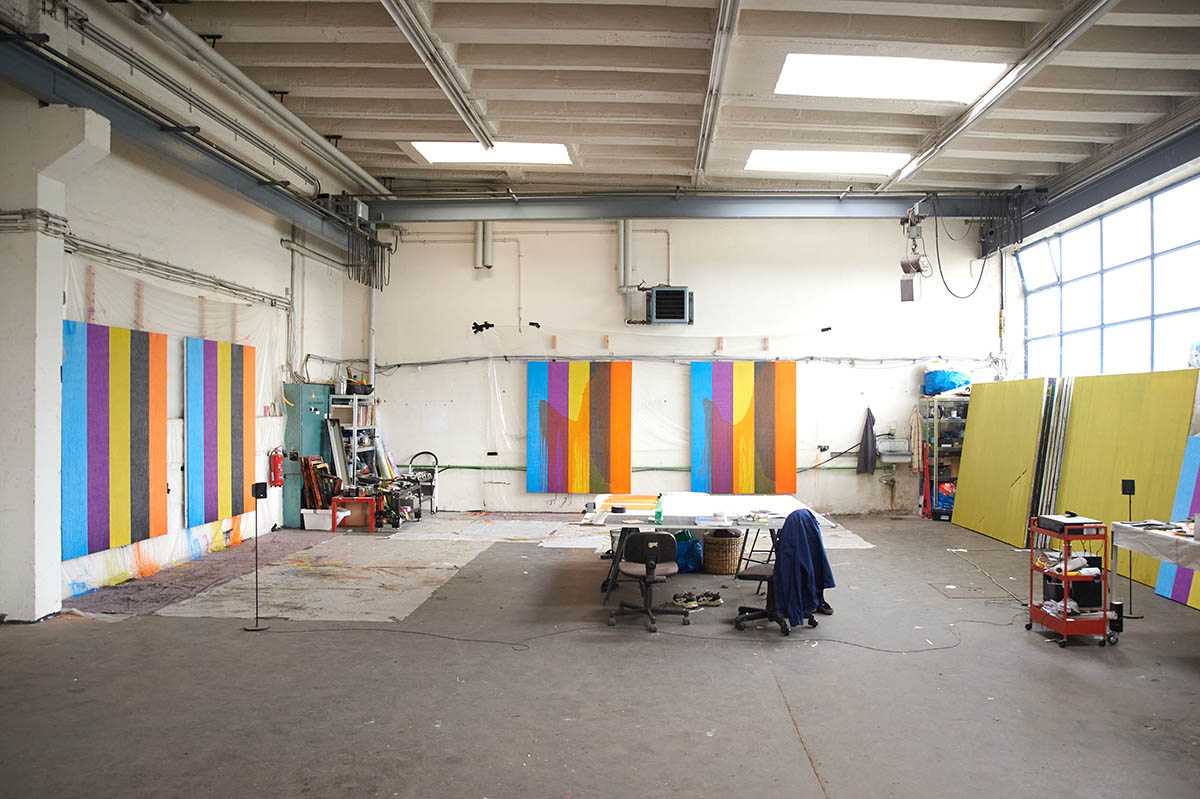
What about Vienna? Where are you working? Where is your studio?
When I returned to Vienna from Stuttgart, I was welcomed with open arms and had an exhibition at Klaus Engelhorn on Stubenring, opposite the MAK, where Bernhard Fleischmann played a concert.
I had jobs as a graphic designer and an apartment, and DJed at my favorite place, futuregarden. Back then, the associated gallery was still called Kunstbüro, and the scene went in and out there (Franco Kappl, Gelatin, N.I.C.J.O.B., Nick Oberthaler, Ariane Müller, and many others).
Later, I was also able to use Franco Kappl’s studio above futuregarden, where I made my first large-format black works. After that, I had a solo exhibition at Ve.sch Kunstverein, where I showed three purple paintings and three black ones, all in the same format. All the sample canvases are stacked with a glass plate on top. I owe a lot to Ve.sch Kunstverein in general. I exhibited four times there, and through these experiences, I got to know a lot of fellow artists and friends. I would also like to thank Amer Abbas (founder of futuregarden and Kunstbüro) and Martin Vesely, who runs Ve.sch Kunstverein, for their support.
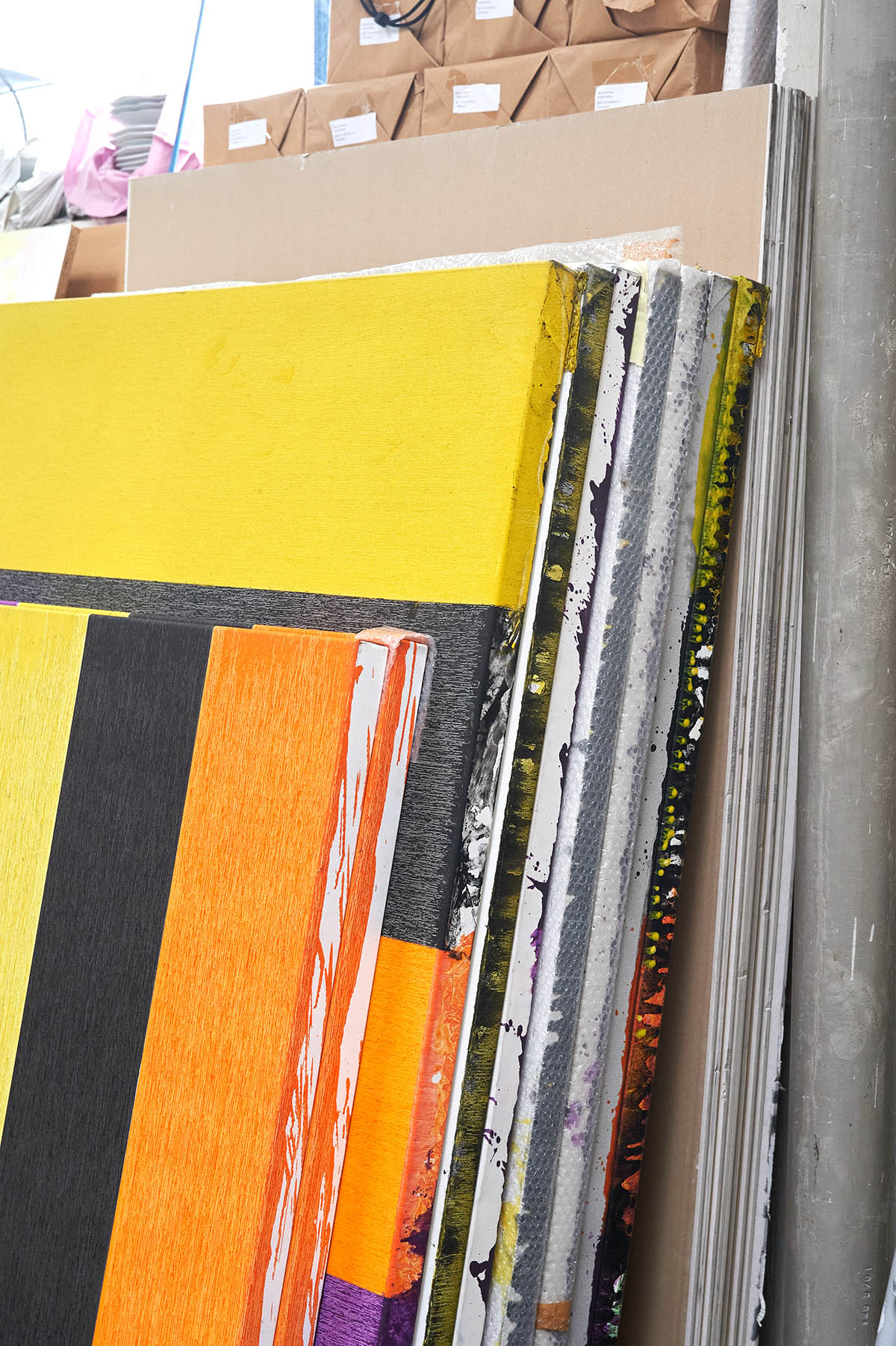
How important is the community around you? Do you have friends who visit your studio often? Have you stayed in contact with colleagues from your student days?
I used to spend a lot of time in the alternative music scene (Old Chelsea, Old Flex, Arena, etc.), but I also went to openings and art events almost every day. That changes your perspective and increases your enthusiasm. My first regular venue was the Chelsea. Back then, it was still in the basement at Piaristengasse 1 in the 8th district. It was just around the corner from my studio on Josefsgasse. And then the futuregarden after I moved to Gumpendorferstraße.
Later, I often visited the Ve.sch, where I also met my wife. There are always various opportunities to visit me in the studio, and I always try to bundle this with an annual open studio or studio parties. Fortunately, I still have many contacts with friends from my student days.
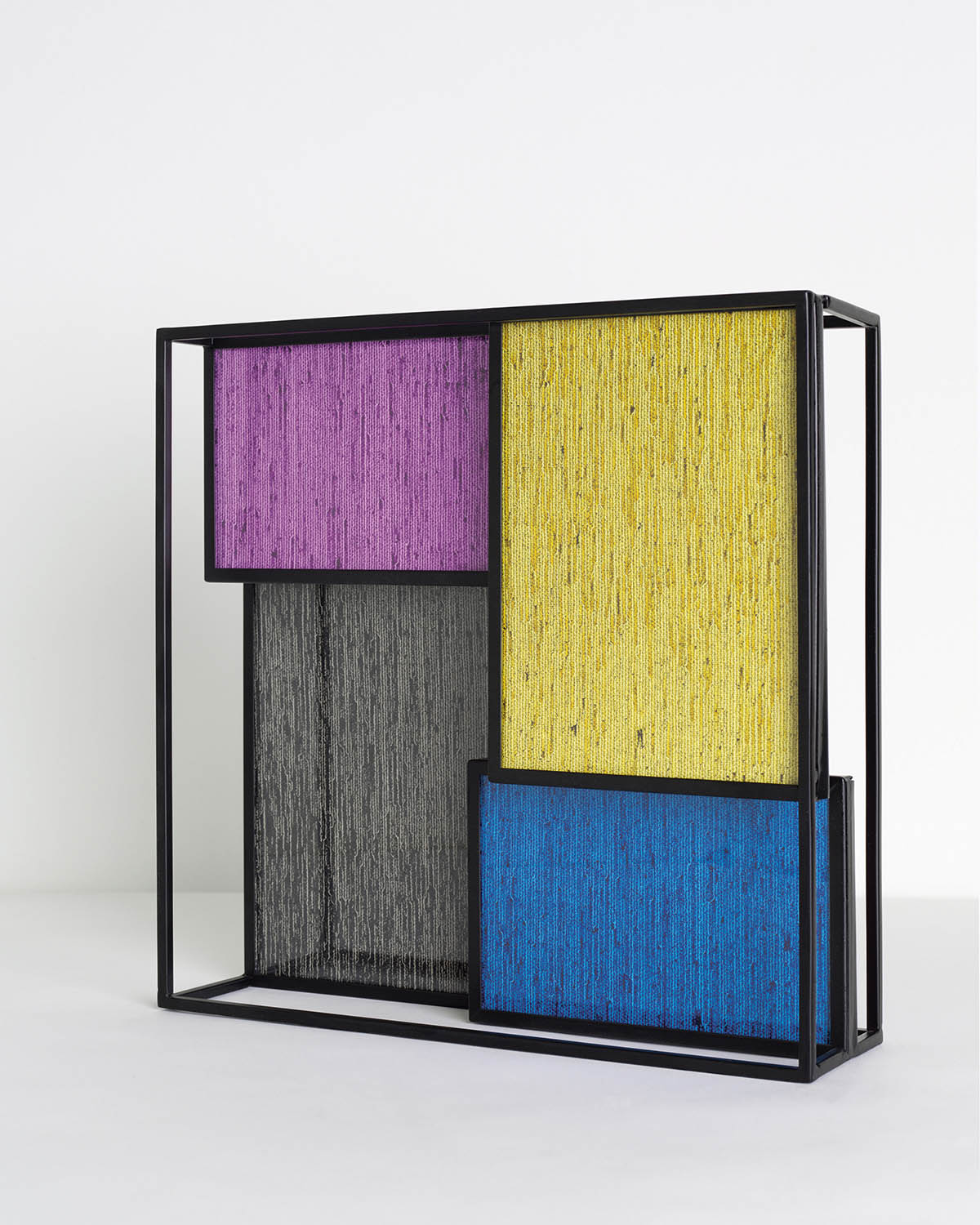
Can you elaborate on the title of your solo exhibition, “Inverse Painting”? What does it mean to you, and how do you interpret it in your work?
Three years ago, I published a catalog with the title “Inverse Painting” at VFMK. The technique I use has a lot to do with the fact that the canvas, with its white fabric, becomes recognizable on the surface, and the actual paint flows in between. The works are painted standing up. And in some cases, the blank canvas is injured with a scratch in which the paint gets stuck and dries upwards as if in free fall. This gave me the idea for the title of the catalog and later exhibition.
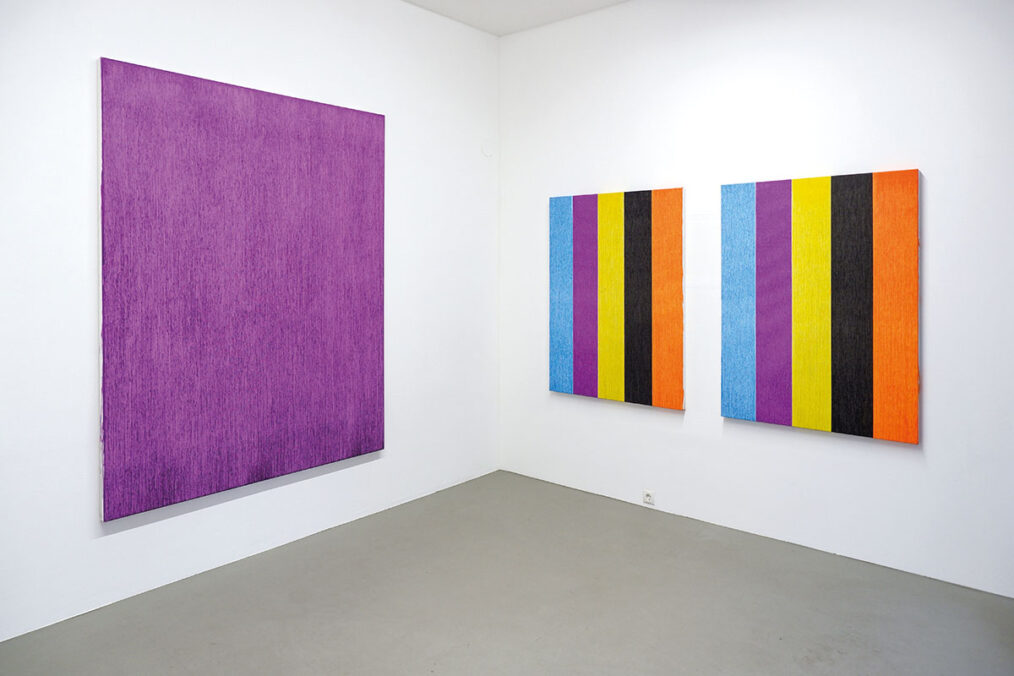
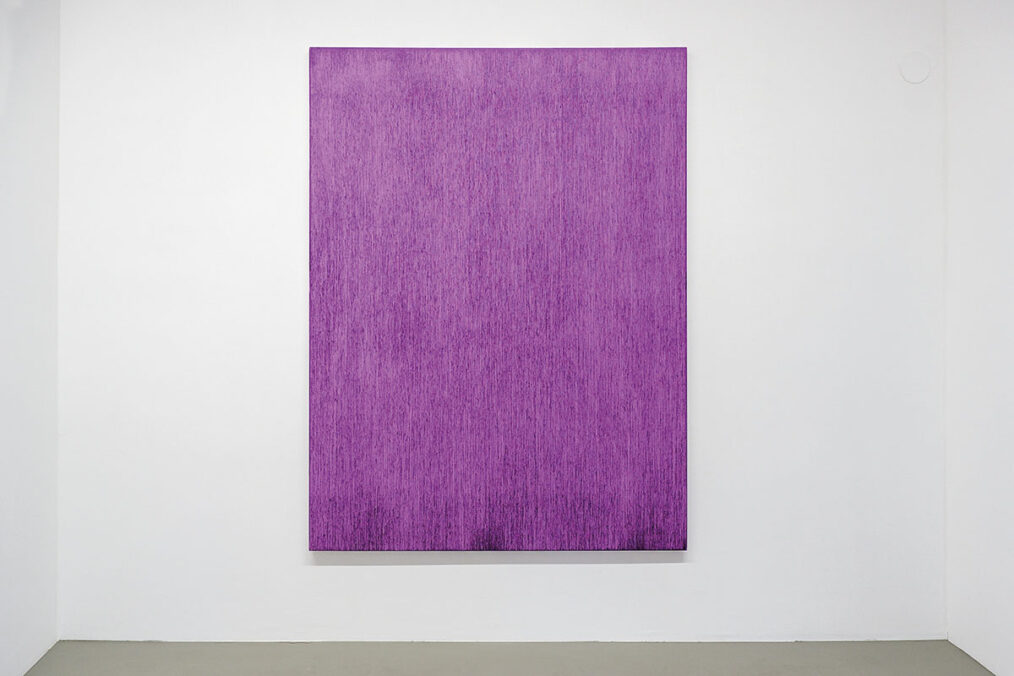
Can you tell us more about the works on view in your solo exhibition “Inverse Painting” at gezwanzig gallery in Innsbruck?
The large purple work opposite the door is supposed to be installed like an altarpiece when you enter the room. This has nothing to do with the content of the work. In its abstractness and regularly torn-open surface, the violet picture is intended to be reminiscent of a matrix, algorithm, or computational representation of the universe. I like it when you can lose yourself in it as a viewer, and a new space opens up behind it.
In the regularity of the irregular, infinity becomes visible.
It blurs the analog and digital worlds. Violet is also a color that is used in the darkroom when exposing photographic paper or screens, and is thus already linked to a process as a color. To the right are two new striped paintings in medium format (130 x 100 cm) in which I tried to paint small glued sketches directly on canvas as regularly as possible.
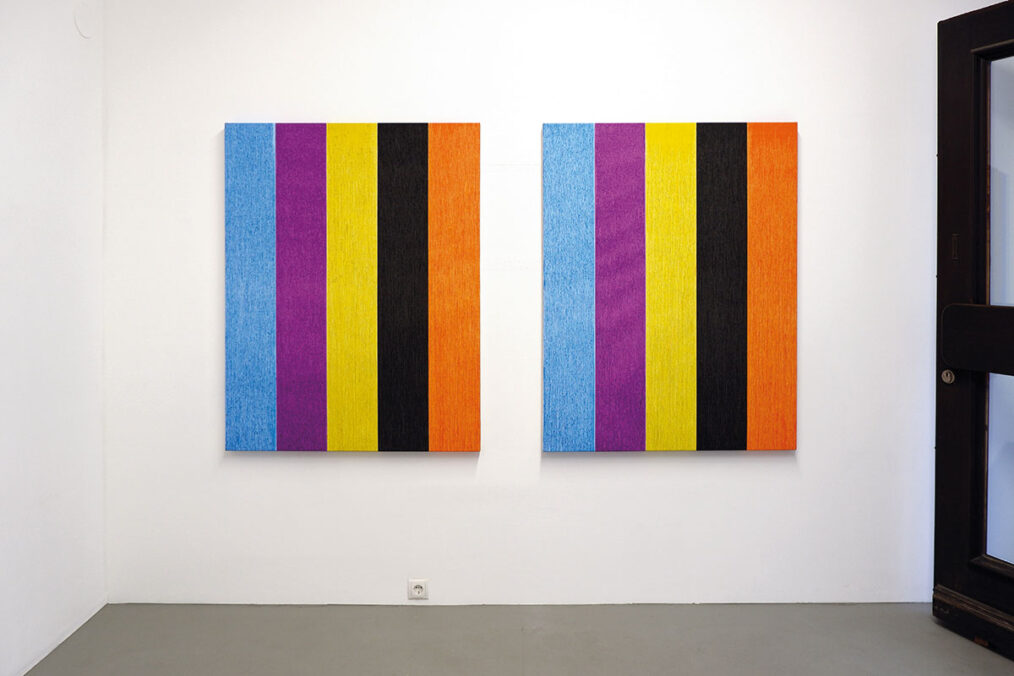
My color palette is limited to the colors shown because they work best in this grid technique. On the left side are two smaller formats that serve as sketches for the larger ones, but also as independent works. In the display are two small-format sculptures in which I have combined areas of color with areas in front of and behind them. They are models for larger sculptures. I love the model-like quality of painting. That nothing is ever perfect, and you have to think it through for yourself.
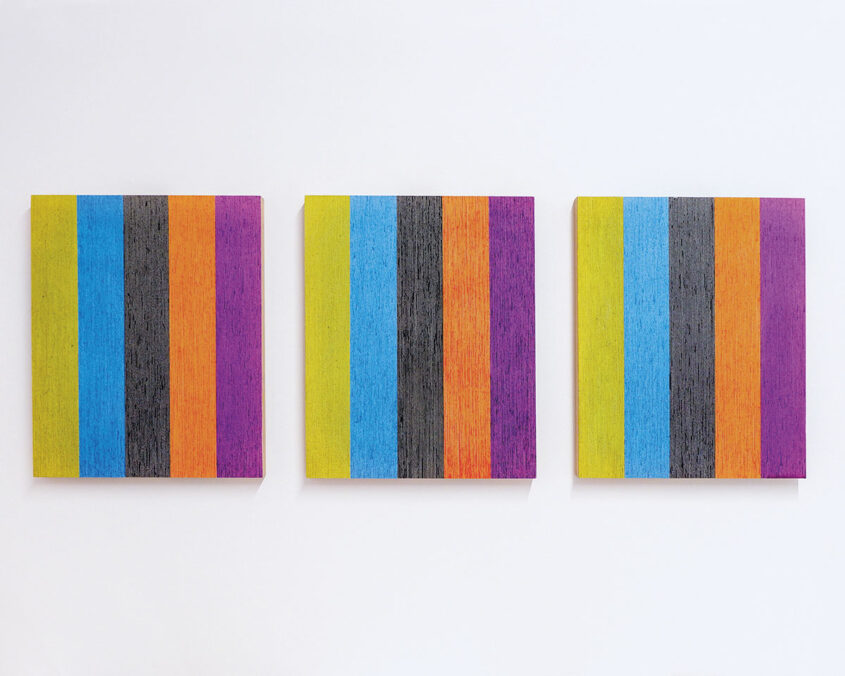
How did you come in contact with gezwanzig gallery?
A friend asked me if I had the time and inclination to meet Manu and Florian. After that, we often met in my studio and became friends. I also created their corporate identity. We held the first exhibition at Gumpendorfer Straße 20, and simultaneously, we presented the Gallery Statement at PARALLEL VIENNA. I am very impressed by their commitment and enthusiasm for new ideas and projects.
What are your next projects?
Next year, I will curate and participate in a group exhibition at the Künstlerhaus Factory in Vienna, with Irina Eden & Stijn Lernout, Gregor Eldarb, Gerhard Himmer, Maureen Kaegi, Ekaterina Shapiro-Obermair, and Esther Stocker. And a solo exhibition at JITSUZAISEI, a gallery in Osaka, Japan.
Current exhibition in Innsbruck:
Solo exhibition: Gerhard Himmer – Inverse Painting
Exhibition duration: until 30. July
Opening times: by appointment and Friday, 11 AM – 6 PM
Venue: gezwanzig showroom | Leopoldstraße 41, 6020 Innsbruck, Austria
Address and contact:
gezwanzig gallery
Gumpendorfer Straße 20, 1060 Vienna, Austria
www.gezwanzig.com
www.instagram.com/gezwanzig/
Gerhard Himmer – www.gerhardhimmer.com, www.instagram.com/gerhard.himmer
Gerhard Himmer is a contemporary painter based in Vienna, where he lives and works after studying at the Academy of Fine Arts in Vienna and Stuttgart. His abstract paintings and installations explore the tension between digital precision and analog materiality, revealing subtle irregularities and organic depth. Himmer’s work has been exhibited internationally and is included in several renowned collections and institutions.




